VIENNA, VA / ACCESSWIRE / December 7, 2023 / Extreme weather events are increasing in frequency and severity. This is not expected to change. Heatwaves worldwide, flooding in New York, and wildfires across Canada are all significant challenges that create future uncertainties. The costs to communities, infrastructure, and economies worldwide are already soaring.
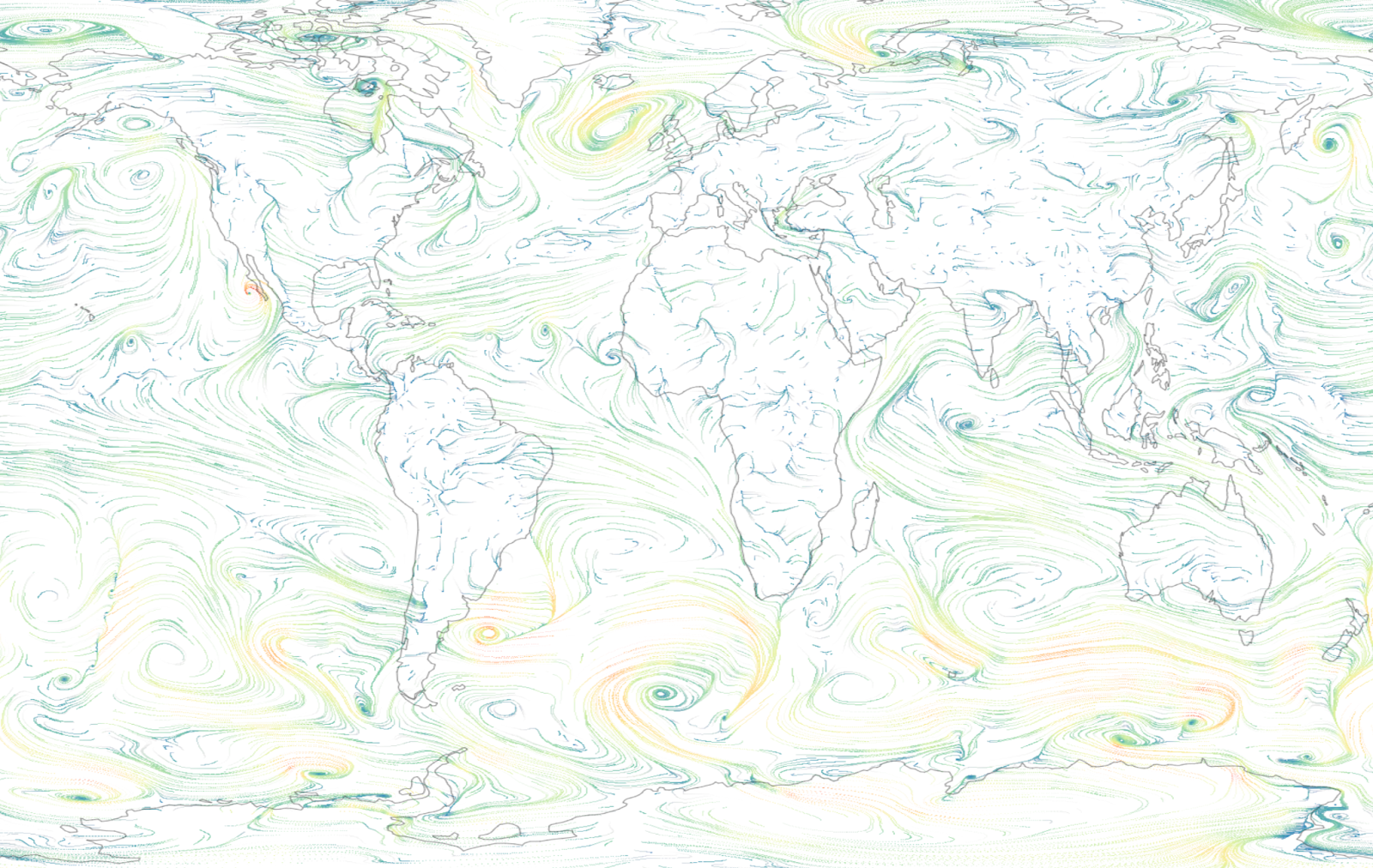
Explore Spire Global's data-driven interactive version of this article at Wind, climate change, and the future
This year has shown that the financial toll of extreme weather events impacts us all. Proactive measures are needed, and companies like Spire Global (NYSE:SPIR) are bringing solutions to a battered climate - not only in mitigating the impact of disasters - but in forecasting a brighter future.
Some utility companies are already working with Spire to forecast and predict weather events and high temperatures that may affect the state's grid.
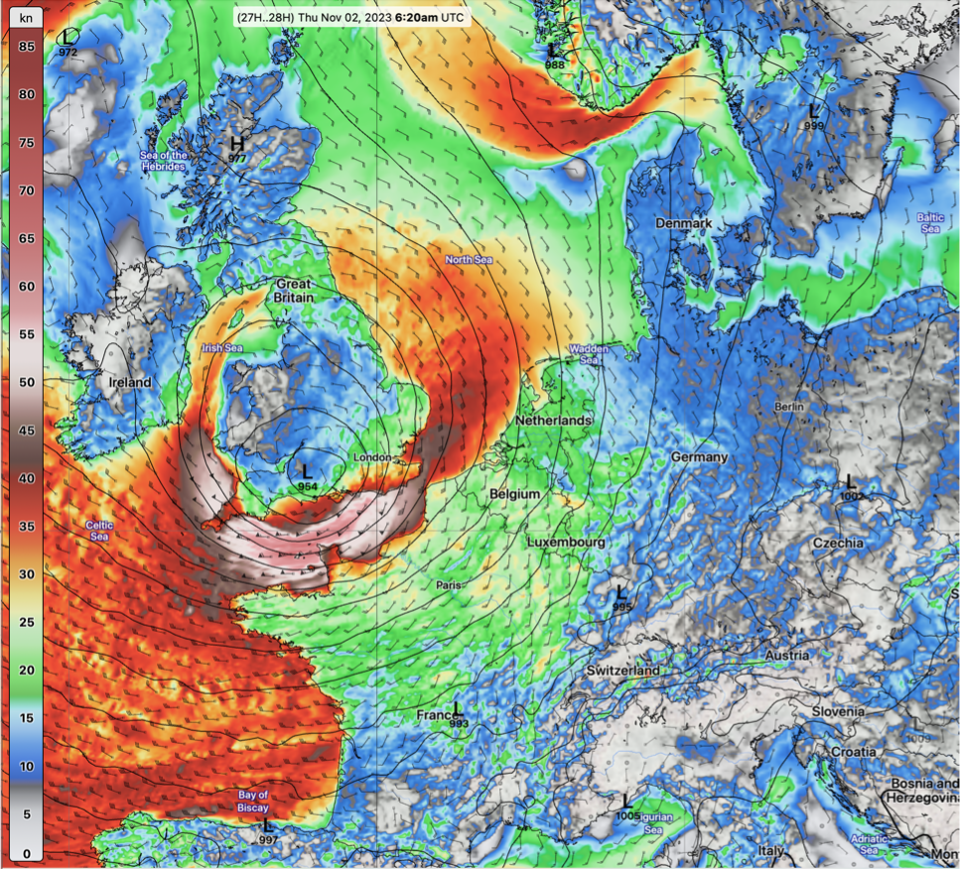
Spire's High Resolution Imaging forecasting high winds over Europe.
The Soaring Costs of Extreme Weather
In 2023, the United States witnessed an alarming rise in the financial toll of extreme weather. According to a report by The Guardian, this cost had already reached a staggering $32 billion this year by August. These catastrophic events, referred to as Billion-Dollar Weather Disasters, have been trending up - not only in tempo, but also cost - and 2023 has become the second most expensive half-year period since 1980. The most expensive was 2021.

Source: NOAA (data); see Spire's Interactive version here.
The financial impact of these storms is not limited to the United States. Extreme weather events have wreaked havoc around the globe, resulting in substantial financial losses and infrastructure damage worldwide.
In Canada, forest fires burned 45.7 million acres in 2023, far surpassing the previous record of 17.5 million acres in 1995. In Europe, the Cerberus heatwave set the highest temperatures on record over the summer. According to scientists, during each day in July, at least two billion people experienced heat conditions made three times more likely due to climate change. In Norway, unusually heavy rains caused a dam to burst leading to landslides and flooding.
Extreme weather events are not just about the upfront costs but also the long-term impact on infrastructure. Monitoring and tracking typhoons, hurricanes, and other extreme weather systems have become critical. For instance, utility companies are already implementing measures using Spire's data, and access to Spire's in-house team of meteorology experts, to protect their infrastructure and pre-position their crews to restore power ahead of possible outages due to weather. The successes of these initiatives will lead to their adaptability to other states and countries.
Climate Initiatives
Amid the threat of extreme weather events, governments and organizations are proactively taking steps to combat climate change and increase resilience. In August, the U.S. Department of Homeland Security (DHS) announced a Climate Resilience Funding initiative worth $3 billion, aiming to fund projects helping communities prepare for extreme weather events. The initiative is part of the U.S. government's "Investing In America" agenda.
In total, the recently passed Infrastructure Law allocates $7 billion to FEMA, to help communities reduce their vulnerability to climate-related hazards such as floods, hurricanes, droughts, and wildfires.
Additionally, the U.S. FY23 budget includes significant investments totaling $44.9 billion in discretionary budget to address the climate crisis.

On a global scale, the European Union has launched the International Platform on Sustainable Finance (IPSF), emphasizing the need for coordinated, large-scale climate action.
Strategic forecasting: Mitigating future challenges through space-based data
The rising frequency of extreme weather events presents a future riddled with uncertainty and potentially higher costs. Record-breaking heatwaves,like the one documented by the New York Times,not only affect labor productivity for outdoor labor and transportation, but also put excess burden on power lines and substations while stressing the electric distribution grid. Effective monitoring and planning can yield significant savings and increased resilience against these challenges.
Government spending on infrastructure to forecast and combat extreme weather is increasing. See Spire's Interactive version here.
Projects like Spire's recently won $4.6 million NASA contract to develop a Microwave Sounder for future missions has to potential to create more accurate and timely datapoints for forecasting weather from space - as well as a more detailed understanding of Earth's atmosphere.
Harnessing Clean Energy
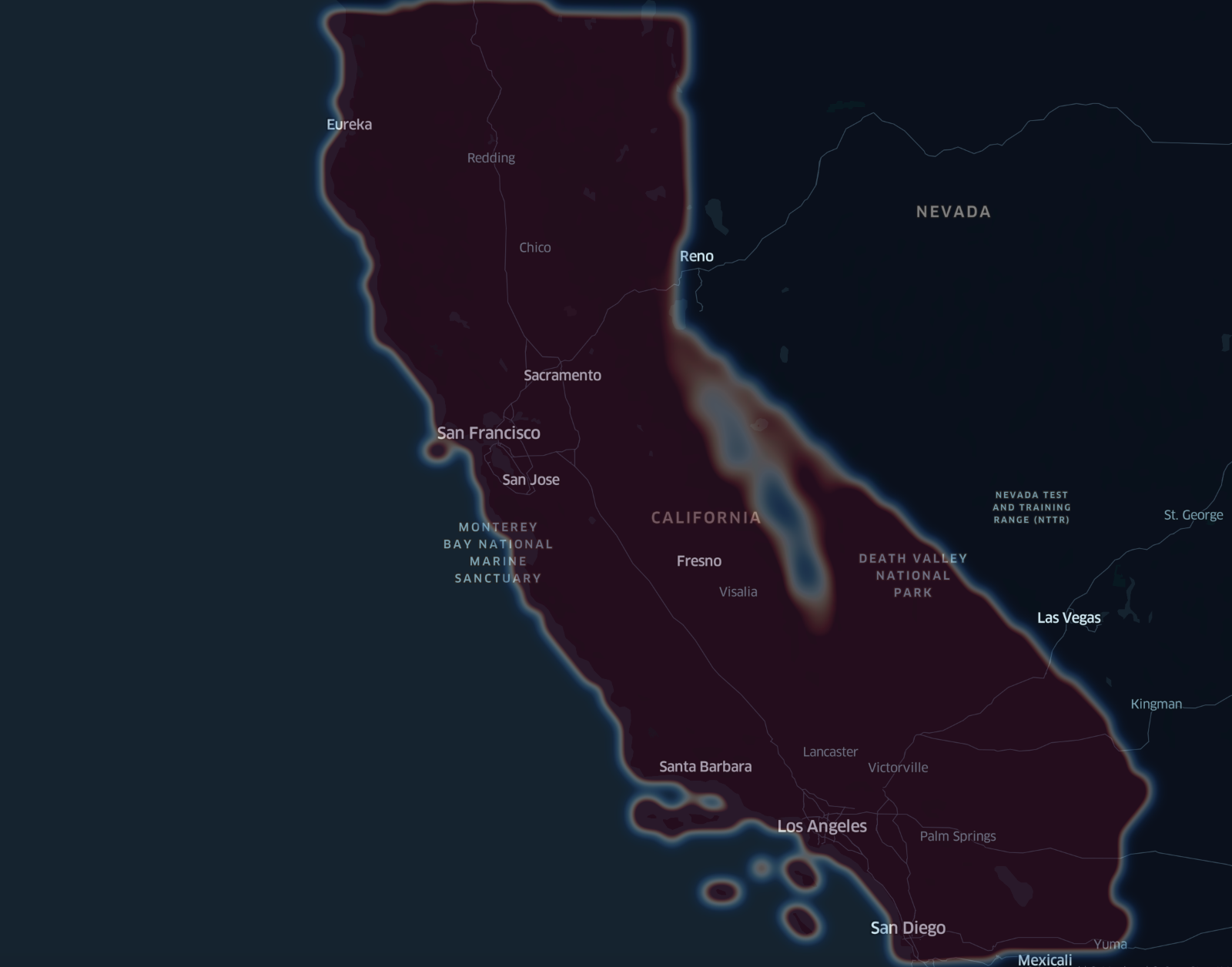
Spire's Wind Density forecasting data for California. Wind Density is a measure used for predicting a wind turbine's power generation. see Spire's Interactive version here.
As the world navigates this changing climate landscape, clean energy sources such as wind and solar power have gained prominence. This industry's growth is not only vital for environmental change but also presents opportunities for economic growth and job creation. Wind and solar commodities play a pivotal role in reducing greenhouse gas emissions. Spire's Renewable Energy forecasting data uses space-based weather models to forecast wind and solar power potential.
Forecasting futures
The same space-based technology to predict extreme weather events accurately is essential not only for disaster preparedness but also for forecasting industry trends globally. While imagery can show you the green-ness to predict crop health, it can't show the soil moisture levels, wind direction and speed, or measures of humidity in the air.
Understanding the impact of future weather patterns is crucial for informed decision-making. Typhoon Bolaven passed by Japan in mid-October disrupting a major shipping route between Asia and North America. Knowing these weather patterns well ahead of time (for example, by utilizing Spire's Voyage Optimization algorithm to find the most fuel-efficient and safe route) allow vessels to efficiently plot their course without impacting their cargo's time-to-market.
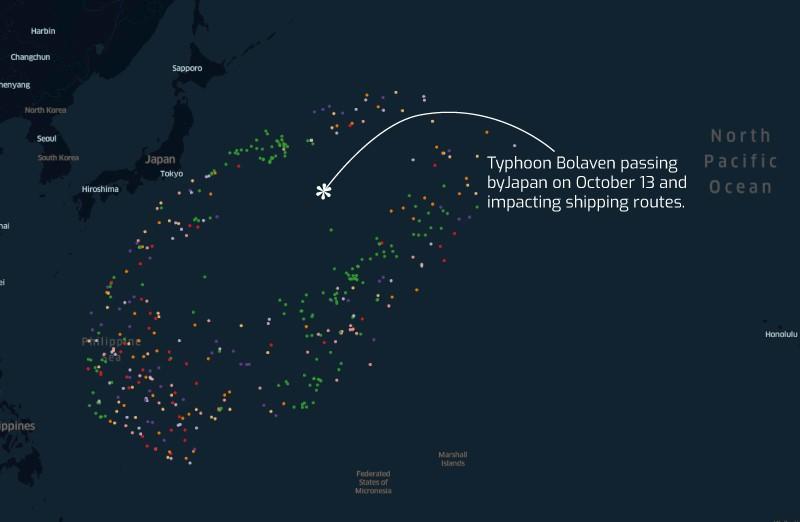
Typhoon Bolaven's track can be seen in the adjusted courses by cargo, oil, and fishing vessels using Spire's Maritime data. See Spire's Interactive version here.
This forecasting is doubly true for renewable energy production - and those that trade in renewable futures. Climate changes means using only historical values for trading is becoming less predictive. New methods and data are needed - the key is in space-based weather forecasting for wind and solar for accurate monthly energy predictions.
As the International Energy Agency (IEA) points out: Wind and Solar Energy is breaking records and expected to overtake coal for electricity generation by 2025. With that, the IEA expects $1.7 trillion to be invested globally this year in renewable energy technology.
That's why Spire's high-resolution model which provides hourly forecasting for wind power (density) and solar energy (solar radiation) is not only important to renewable industries - but also to futures traders.
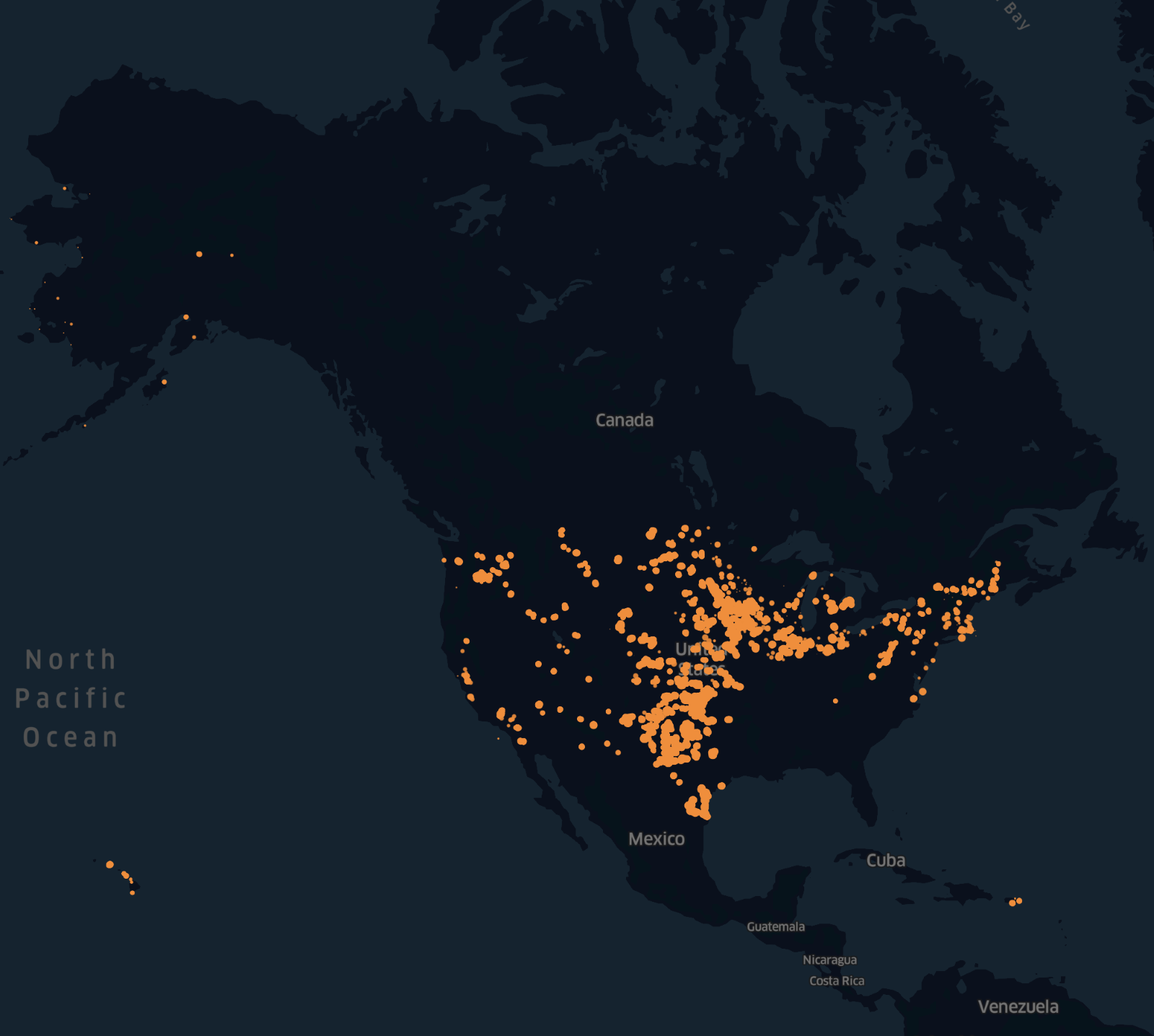
USGS data showing every wind turbine across the U.S., sized by each turbine's rotor radius. See Spire's Interactive version here.
Spire's forecasting allows futures traders to make informed decisions across industries. Forecasting wind power and solar energy is effective both for creating a more efficient - and sustainable - power grid, and for futures traders to know and predict accurate values for futures contracts.
Not only solar and wind, but access to Spire's data for weather, soil moisture, humidity, and other agricultural measures - as well as issues that may impact shipping - means the ability to create accurate futures forecasting models around the world.
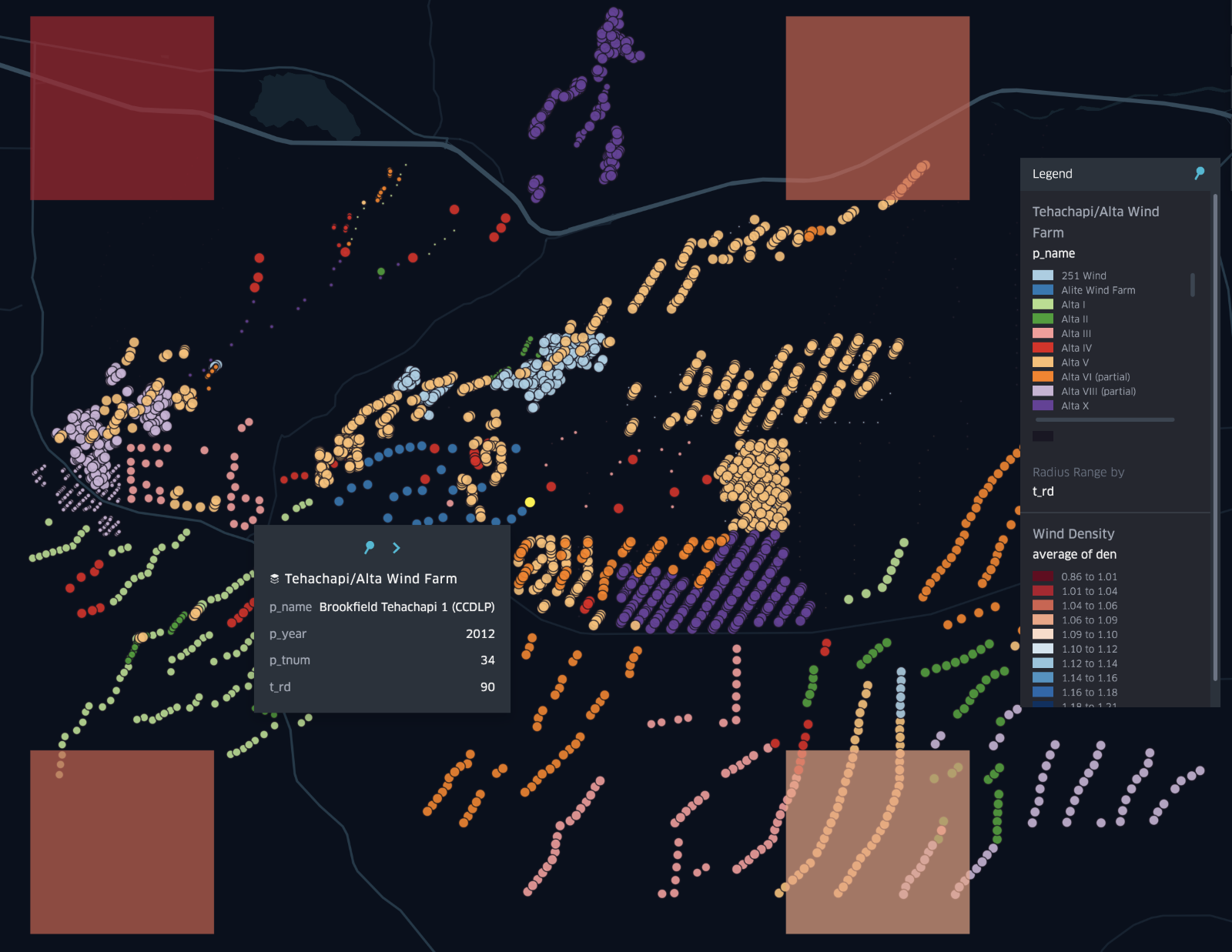
Brookfield Management's Tehachapi 1 turbines (blue circles) at Alta Wind Center in California, one of the largest Wind Farms in the U.S. The large squares show Spire's Wind Density measurements at 100 meters above ground. Measurements are also made at 80 meters and 120 meters. see Spire's Interactive version here.
Spire's space-based renewables and weather data let customers and investors see what's happening on the ground - for examples seeing the wind speeds across Tehachapi Wind Farm in California and forecasting each turbine's energy generation.
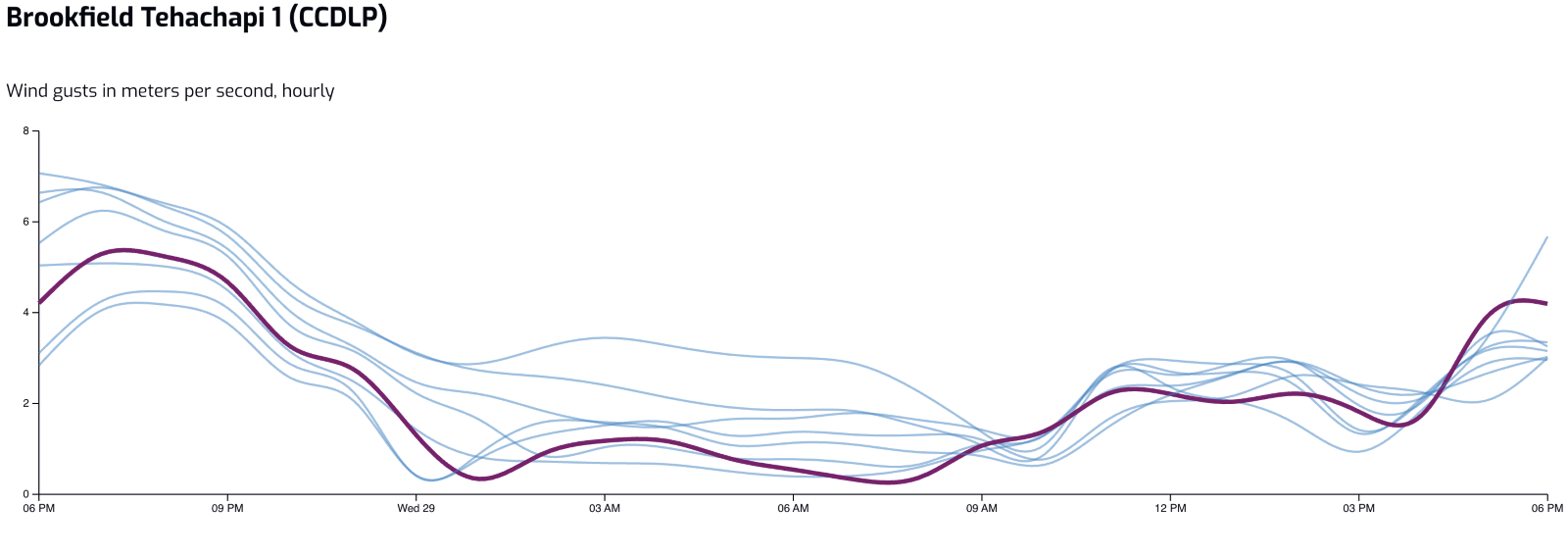
Spire's wind forecasting data passing by one specific wind turbine in Tehachapi Wind Farm over a 24-hour period. See Spire's Interactive version here.
The rising costs of extreme weather events serve is a stark reminder of the urgent need for climate action. Governments, organizations, and individuals must work together to mitigate the effects of climate change, invest in resilient infrastructure, and transition to clean energy sources. As the world grapples with the challenges of a changing climate, the ability to forecast and prepare plays a pivotal role in building a sustainable future.
Explore Spire Global's data-driven interactive version of this article at Wind, climate change, and the future
Contact:
Ben Hackman
[email protected]
202-301-5127
The forward-looking statements included in this press release, including for example, the quotations of management, statements regarding continued growth, statements regarding Spire's expected timing to generate positive cash flow, statements regarding increasing its ARR, statements regarding profitability, and statements regarding the benefits of its solutions to its customers and generally, reflect management's best judgment based on factors currently known and involve risks and uncertainties. These risks and uncertainties include, but are not limited to, potential disruption of customer purchase decisions resulting from global economic conditions including from an economic downturn or recession in the United States or in other countries around the world, relative growth of its ARR and revenue, the failure of the Spire and exactEarth businesses (including personnel) to be integrated successfully, the risk that revenue and adjusted EBITDA accretion or the expansion of Spire's customer count, ARR, product offerings and solutions will not be realized or realized to the extent anticipated, the ability to maintain the listing of Spire's securities on the New York Stock Exchange, the ability to address the market opportunity for Space-as-a-Service, the ability to implement business plans, forecasts, and other expectations, and identify and realize additional opportunities, the risk of downturns, new entrants and a changing regulatory landscape in the highly competitive space data analytics industries, developments in and the duration of the COVID-19 pandemic and the resulting impact on Spire's business and operations, and the business of its customers and partners, Spire's potential inability to manage effectively any growth it experiences, Spire's ability or inability to develop new products and services, and other risks detailed in reports Spire has filed with the Securities and Exchange Commission, including Spire's Annual Report on Form 10-K, Quarterly Reports on Form 10-Q and Current Reports on Form 8-K. Significant variation from the assumptions underlying Spire's forward-looking statements could cause its actual results to vary, and the impact could be significant. All forward-looking statements in this press release are based on information available to Spire as of the date hereof. Spire undertakes no obligation, and does not intend, to update the information contained in this press release or the accompanying conference call, except as required by law.
SOURCE: Spire Global




